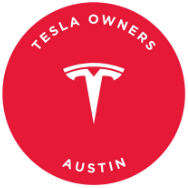The launch of the Tesla Robotaxi has been highly anticipated as one of the biggest tech developments of the year. However, with the June launch date still looming, skeptics have already labeled the rollout as a failure, an enormous mess, and various other negative adjectives. Despite this early criticism, it is important to consider both sides of the argument and avoid biased reporting based on limited evidence.
A recent article by Futurism painted a grim picture of the Robotaxi rollout, citing the opinions of Dan O’Dowd, a vocal critic of Tesla’s Full Self-Driving technology. While it is fair to acknowledge the challenges and imperfections of Full Self-Driving, it is equally important to highlight the potential benefits and successes of the technology. Personal experiences with Full Self-Driving have been positive for many users, showcasing the responsible and effective nature of the system.
The article also fails to mention Tesla’s recent Vehicle Safety Report, which demonstrates that Autopilot-enabled cars are nearly 10 times less likely to be involved in accidents compared to the national average. This achievement, while not directly related to Full Self-Driving, highlights Tesla’s commitment to safety and innovation in driver assistance systems.
While Tesla has a history of missing timelines, especially with Full Self-Driving, the company has taken a more cautious approach with the Robotaxi rollout. By starting with a small fleet of Model Y vehicles and conducting private testing in Austin, Tesla aims to ensure a controlled and safe introduction of the technology. This approach may be disappointing for those eager for a public rollout, but it is a necessary step to address regulatory concerns and ensure the reliability of the Robotaxi platform.
Media outlets have pointed to a recent request from the National Highway Traffic Safety Administration for more information on how Tesla’s technology will handle reduced roadway visibility conditions. This request is a reasonable step to ensure the safety and effectiveness of the Robotaxi program, especially as it will be one of the first driverless ridesharing programs in the United States.
Despite the early criticism and skepticism surrounding the Tesla Robotaxi, it is important to give the company and the technology a fair chance to prove themselves. With the June launch date approaching, we should withhold judgment and allow Tesla the opportunity to meet its targets and demonstrate the potential of the Robotaxi as a reliable and innovative ride-sharing option.

